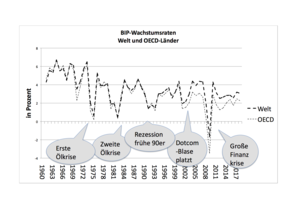HERMAN DALY APPLIES A BIOPHYSICAL LENS TO THE ECONOMY AND FINDS THAT BIGGER ISN’T NECESSARILY BETTER.
Seed: When did you first start thinking about a steady-state economy?
As an undergraduate, taking a course in the history of economic thought and reading Malthus. Then in graduate school I studied under Nicholas Georgescu-Roegen, a pioneer in relating the entropy law to economic theory. Elementary economic theory describes something called a circular flow diagram: Firms supply goods and services to households, which in turn supply labor and capital factors of production back to the firms. This flow goes around and around, and money flows in the opposite direction to pay for it. The way it’s usually depicted is as a closed circulatory system. What’s ignored is the economy’s digestive system: the input of low-entropy raw materials from the environment and the expulsion of high-entropy waste products back into the environment. A fundamental assumption of those who treat the economy like a totally circular exchange is that the environment is infinite relative to us, that natural resources and space to absorb our waste are not scarce. The assumption is no longer valid.
Seed: So what does this mean for growth?
What is growth? Is it a temporary process to arrive at a state that we will then want to maintain? Or is growth a process which is itself desirable and is supposed to go on forever? Right now nobody defines a state of sufficiency. For example, in a recent growth report financed by the World Bank, experts took great hope from the fact that several countries had managed to grow at 7 percent for 25 years. Their goal—7 percent growth for another 25 years—will lead to a quintupling of the global economy and all that flows into it. And come 2033, will we be satisfied, or will the goalposts move once again? The idea of steady-state economics is that growth really should be a temporary process to arrive at some level of sufficiency.
Seed: How will we know when that level is reached? Is there a way to measure it?
Well, we don’t measure it because our GDP, our national accounting system, does not separate costs and benefits of growth. Pollution, for instance, is not subtracted as a cost of growth. In fact, the expenditures and efforts to clean up pollution are added as a benefit. This is a strange, asymmetric entry into the accounts, because if you’re not going to count the cost of pollution, then you shouldn’t count its cleanup as a benefit.
Seed: How would you change the system of accounting?
What we tax mostly now is income from the input of labor and capital, what economists called “value added.”
Value added to what? To the resources extracted from nature, which are treated as zero. So, the idea is to shift our tax base away from value added and toward the resources themselves. If we want to increase efficiency, then we have to begin by making things more expensive. We’re careful how we use gold. We’re not so careful how we use aluminum.
If you start with a vision of the economy as a subsystem of the larger biosphere, as it grows, it takes into itself more and more of the total system. Assuming people do things intelligently, as the economy gets bigger, it absorbs the least vital environmental services first. So the costs of growth are inevitably going to go up as you exploit ever more valuable resources. At some point, the expansion will not be worth the costs.That’s the optimal scale from the point of view of human concerns.
But this doesn’t mean the end of development. Growth is more and more of the same stuff. Development is the same amount of better stuff.










